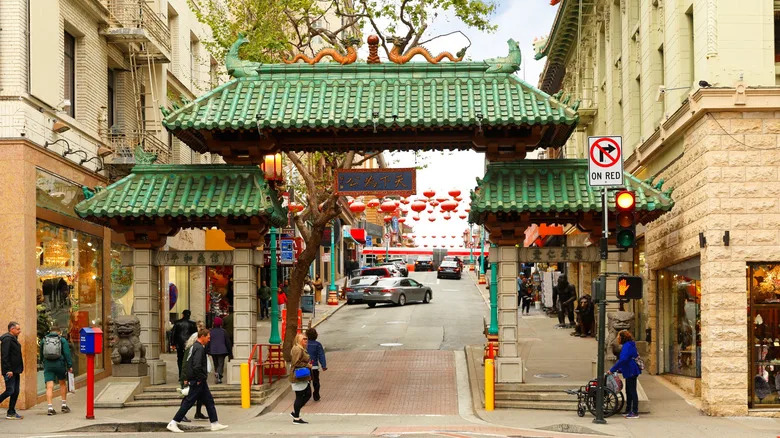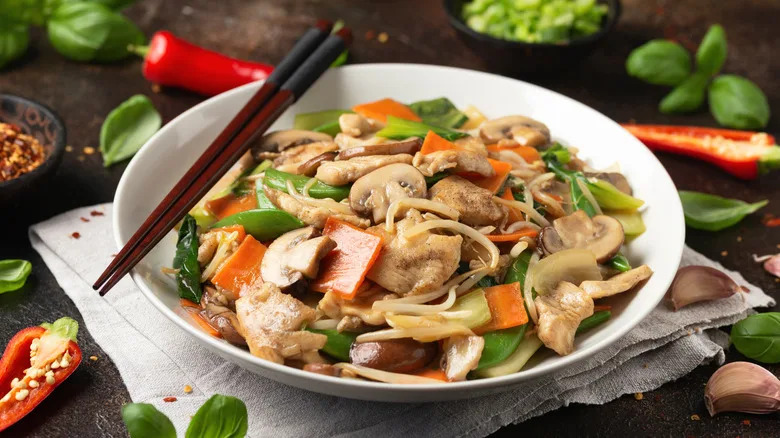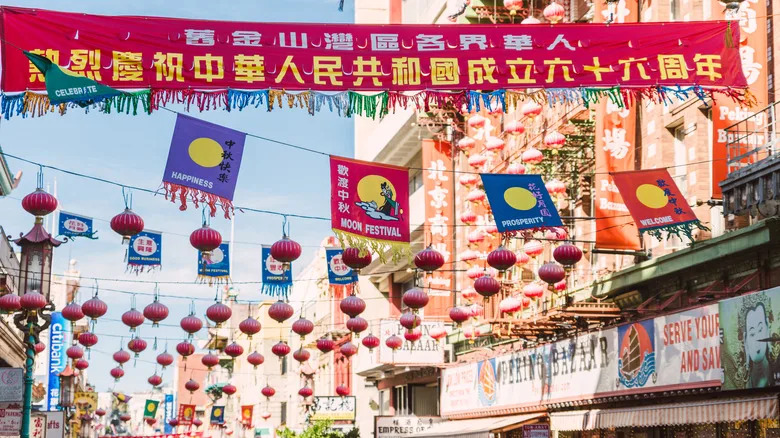In San Francisco, The Country's Oldest Chinatown Helped Define Chinese American Cuisine
 Yahoo is using AI to generate takeaways from this article. This means the info may not always match what's in the article. Reporting mistakes helps us improve the experience.Generate Key Takeaways
Yahoo is using AI to generate takeaways from this article. This means the info may not always match what's in the article. Reporting mistakes helps us improve the experience.Generate Key TakeawaysChinese food is one of the most ubiquitous cuisines in America, with restaurants dotting the landscape even in places where the Chinese population is relatively small, but it all started in San Francisco's Chinatown. While New York, Los Angeles, and Chicago all eventually grew their own local Chinatowns, it was the Bay Area that set the stage for the birth of Chinese-American cooking.
Like Italian-American or Tex-Mex, Chinese-American cuisine is it's own unique thing, influenced by — but in many ways distinct from — the many different regional styles of Chinese cuisine. As with many immigrant cuisines, it merged traditional recipes with local ingredients and new tastes that appealed to the American palate, and the people of San Francisco's Chinatown were the pioneers.
Chinatown in San Francisco was born in the wake of California's famous Gold Rush of 1849. Only a year out from the Mexican-American War, where the fledgling United States acquired California and San Francisco, the discovery of gold brought waves of immigrants to what was still a mostly lawless frontier territory. Driven by struggles in their home country, many Chinese immigrants joined the Gold Rush or worked as laborers on projects like the Trans-Continental railroad. But the Chinese were heavily discriminated against, both by law and through acts of violence from earlier American settlers. This was part of what drove many Chinese immigrants to band together in a neighborhood where they would be safe and more accepted. By 1852 over 20,000 Chinese workers had come through San Francisco.
AdvertisementAdvertisement#«R14ekkr8lb2m7nfddbH1» iframe AdvertisementAdvertisement#«R24ekkr8lb2m7nfddbH1» iframeRead more: 13 International Dining Etiquette Rules We Should All Be Following
Chinese Restaurants In San Francisco's Chinatown Pioneered Dishes That Appeal To Americans
 Chop suey in white bowl surrounded by ingredients - Drong/Getty Images
Chop suey in white bowl surrounded by ingredients - Drong/Getty ImagesLike many immigrant enclaves, the restaurants of San Francisco's Chinatown at first mainly catered to other Chinese residents. But the San Francisco of the 1850s was still a roughshod, developing frontier town, and even in the rest of the country, America had only just started to develop a local restaurant culture. By contrast, China has a long history of professional hospitality. Chinese restaurants were clean and affordable, which appealed to the many working-class people coming into the city. Oh, and the food was actually good. Despite racist backlash attacking the Chinese rice-based diet, even the upper classes of San Francisco were enamored by the quality and flavor of Chinese dishes.
That interaction also led to the creation of some iconic dishes that helped spread Chinese cooking across the country. One of the most famous dishes to come out of San Francisco's Chinatown was chop suey. Like many immigrant creations, it took inspiration from an older offal dish from China's Guangdong region, tsaap slui, where many early Chinese-Americans came from. No one knows the exact origins, but the classic story goes that,in the 1860s, a Chinese restaurant owner threw together a dish of leftover noodles, vegetables, and meat to appeal to a group of rowdy miners eating at his establishment. Dropping the traditional offal for more Western ingredients, chop suey spread around the country with Chinese restaurants and became an early entry point for curious American diners.
San Francisco's Chinatown Helped Turn Chinese Restaurants Into Hip Destinations
 San Francisco's Chinatown decorations hanging above street - Daniel Viñé Garcia/Getty Images
San Francisco's Chinatown decorations hanging above street - Daniel Viñé Garcia/Getty ImagesChop suey may have been a big deal, but it wasn't the only famous Chinese-American dish introduced during the Gold Rush. Egg foo-yung is another dish that appealed to Americans that was created by Chinese immigrants coming through San Francisco in this era. Slightly later, the city also introduced the fortune cookie, which was actually inspired by a Japanese cookiebut later ended up being sold in San Francisco's Chinese restaurants and become synonymous with Chinese food in the United States.
AdvertisementAdvertisement#«R1dekkr8lb2m7nfddbH1» iframe AdvertisementAdvertisement#«R2dekkr8lb2m7nfddbH1» iframeOne of the first Chinatown's biggest American legacies actually came from a tragedy. In 1906, the Great Fire hit San Francisco, and Chinatown was heavily damaged. The residents used the economic importance of the neighborhood as leverage to get many of the once plain buildings rebuilt with more elaborate Chinese-aesthetic designs, like pagoda roofs, to attract more tourists to the area. It worked, and San Francisco's Chinatown became the model for similar build-outs in places like Los Angeles in the 1920s.
During this era, the perceived "exotic" foods and architecture of Chinatownsmade them hip spots for young city dwellersto visit, cementing Chinese restaurants in America's urban culture. The Chinese community would face its ups and downs in coming decades, but by this time, Chinese-American cuisine was firmly established as a major force in America. And almost all of the trends that helped put it there can be connected in some way to the original Chinatown in San Francisco.
Read the original article on Tasting Table.













